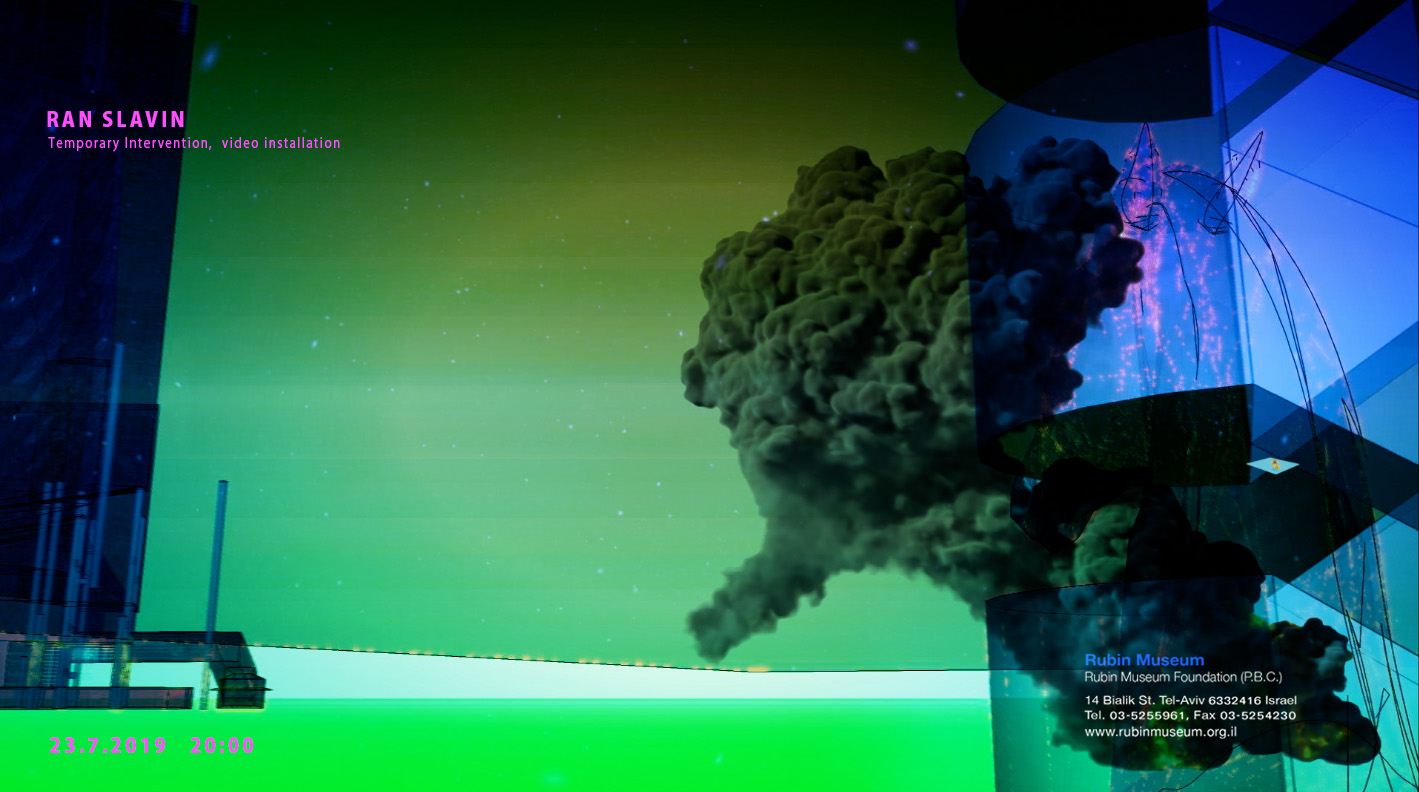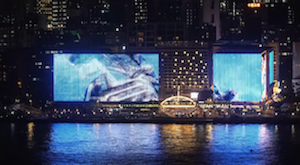“Temporary Intervention”: A site-specific video installation at the Rubin Museum
In a new video installation at the Rubin Museum, artist Ran Slavin intervenes in 3 Rubin oil paintings on display in a stylistic paraphrase, stretching lines between the 1920s’ and 2020.
Slavin superimposes bits of digital videos onto Rubin’s canvases, adding to these iconic paintings a technological presence that reverberates the virtual that has by now become reality.
Jerusalem (1925)
To the panoramic view of the hills surrounding Jerusalem, as Rubin depicted them in 1925, Slavin adds a menacing pillar of thick black smoke rising in the depth of the landscape, interjecting to the scene the continuous Israeli-Palestinian conflict nibbling into the cortex of Israeli society.
Les Fiances (1929)
Seen seated regally on a Tel Aviv balcony, Rubin and his betrothed are overlooking Jaffa Port. Slavin frames this serene scene with digital animations deriving from the post-internet age of digital information.
The frame is made up of graphic, hyper-synthetic colors and three-dimensional elements that are absurd and reminiscent of graphic waste, constantly changing and agitating in the tiny frame’s rectangles. Titled The Floating Life, and surrounding Rubin’s canvas, this work is an amalgamation of chaotic visuals, the outcome of abundance, availability and excess, reflecting the virtual-digital age.
Orange Groves near Jaffa (1928)
In an irrigation reservoir in the heart of a Jaffa orange grove, Slavin interjects a girl stretching on a floating mattress, as an icon of hedonism and contemporary leisure culture. On one hand the reverberation of a continuous reality which is not void of aggression, on the other, a parallel yet separate digital reality which introduces into the scene today’s world.
Ran Slavin
Rubin Museum Installation ( July 2019)
16:52 minutes (loop)















